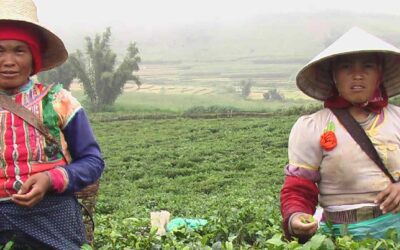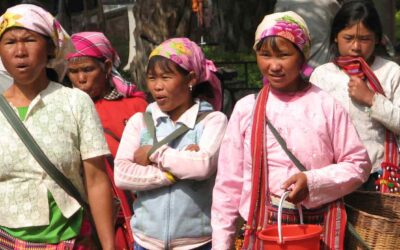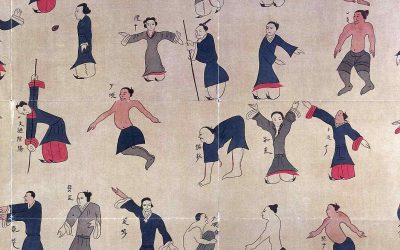Traveling to Yunnan Province – the new Shangrila
Yunnan is the most interesting province in China and the most recommended for those looking to travel to exotic places or planning a second trip to China. Its location, in the extreme southwest of the country, its landscape, composed of an endless series of mountains, its population, belonging to more than 400 different ethnic groups encompassed in 25 officially recognized minorities, and its climate, subtropical with two distinct seasons: the dry and rainy seasons, make it a province very different from other Chinese provinces, a world where the slow interaction between the Han Chinese and minority populations, often with cultures as complex as the Chinese themselves, has created a distinct way of life, which has made it one of the most popular tourist destinations in China. The great variety of its flora, fauna, geography and ethnic groups make it especially interesting for the traveler, the numerous cultural relics preserved with zeal by its inhabitants, leave no one indifferent. With an area of just over 400,000 km2 and a population that already exceeds 40 million inhabitants, it offers the traveler a continuous surprise, a deep emotion.
In fact Yunnan is so different from the rest of China that its eighteen oddities have become famous, which we mention for the reader to travel well informed: some dedicated to the special character of its women, such as men taking care of children while women work, women climbing mountains faster than monkeys, a young woman being called «old woman», girls carrying tobacco, as well as flowers throughout the year. Others allude to their exuberant nature, such as: three mosquitoes make a dish; to male customs, such as monks marrying, smoking in bamboo pipes; to their dress, the same in all seasons, and with sandals showing the toes; to their way of cooking, covering the food with a bamboo cone like a hat; to the peculiarities of their transportation, that the car is faster than the train, or that they move among the clouds (because of the numerous mountain passes), that the train communicates with foreign countries (Vietnam) and not with China, or their climate, which varies in a matter of kilometers.
On the other hand, it is curious to note that while official publications insist on comparing certain parameters between countries with completely different size and population, there are great similarities between the province of Yunnan and the Spanish State. Not only in their size and population, already mentioned, but both occupy a similar situation with respect to China and Europe, in the extreme southwest; Both are considered the connection with the strange world of the south and the remote world of the west, as it is well known that Africa begins in the Pyrenees and Southeast Asia begins in Yunnan, both have become the preferred tourist destination of their respective geographical entities, both are tremendously mountainous (Yunnan much more than Spain), have very different climates in their geographical extremes, in Yunnan from the perpetual snow of the glaciers in the northwest to the tropical climate of the south, and also have a similar number of administrative units, sixteen in Yunnan for the seventeen in Spain.
As in all destinations my recommendation is to travel as leisurely as possible, but my experience has shown me that even travelers who combine the stay in Yunnan with the trip in China, spending only 3 or 4 nights in the most famous places, usually leave Yunnan satisfied with the experience. Of course it will be more interesting to spend in Yunnan one or two weeks, or months as some lucky ones do. Hopefully this guide will be useful for all travelers.
The capital of the province is the city of Kunming. To the east of this city are the important industrial centers of Yuxi and Qujing, and beyond that the little visited areas, where live Miao and Zhuang populations with very interesting cultures. If one travels in a southeasterly direction one will find the ancient city of Jianshui and the wonderful rice terraces in Yuanyang. Further west, bordering the border with Laos and Myanmar is the land of the Dai, with its secluded villages and in the mountains, people of the Hani-Akha, Lahu and Wa minorities, with spectacular dress. To the northwest, on the other hand, are the tourist cities of Dali, Lijiang and Shangrilá.
Last posts
The Bull that Shaped the World and Other Sacred Bovines among the Bulang Minority
The Bull that Shaped the World and Other Sacred Bovines among the Bulang Minority The Bulang people (布朗族), an Austroasiatic ethnic group primarily inhabiting Yunnan’s tea-growing highlands, revere the ox as a sacred being intertwined with creation, agriculture, and...
The Lahu Matriarchy: An Egalitarian Dyadic Society in China
The Lahu Matriarchy: An Egalitarian Dyadic Society in China From the book: Mothers, Queens, Goddesses, Shamans: Matriarchy in China (Miraguano, Madrid, 2011) The egalitarian society of the Lahu drew academic attention with Du Shanshan’s study Chopsticks Only Work in...
The Wenzi Begins: Echoes from a Forgotten Taoist Voice
The Wenzi Begins: Echoes from a Forgotten Taoist Voice The Wenzi (文子) is an ancient Daoist text attributed to a disciple of Laozi. Although its authenticity has been debated throughout history, its content clearly reflects the Daoist worldview and its influence on the...







